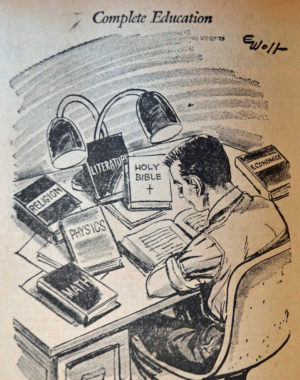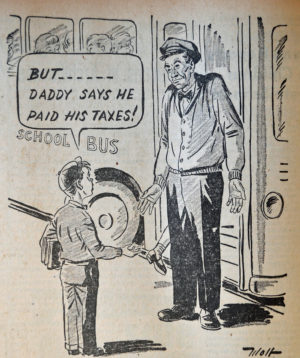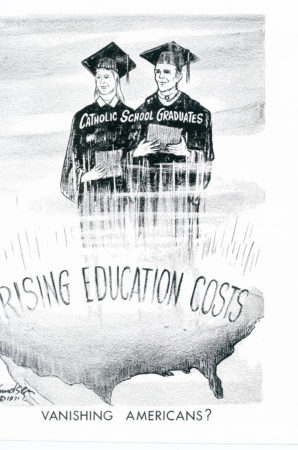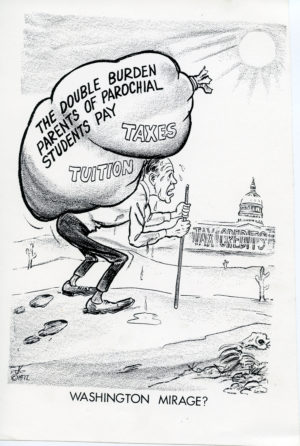Education
While Thomas Nast had used cartoons to attack Catholic education, many Catholic cartoonists used their drawings to highlight its importance in modern society.
Wolf, “Complete Education,” October 4, 1963
By including a religion textbook and a Bible, Wolf highlights the idea that a child’s education would be incomplete without a strong religious background.
Unequal Treatment by Government
One common theme expressed in Catholic cartoons on education, was the unequal treatment by the government when dealing with public and parochial schools. This issue first came to a head over school bussing. Catholics were frustrated that despite paying taxes, their children were prohibited from taking the bus to their parish school.
Wolf, “But Daddy Says He Paid His Taxes!” August 24, 1962
A student is prevent from getting on a school bus by the driver because the child attends a Catholic school.
By the 1970s, the next major issue for Catholic education was its rising costs. Many Catholics believed that parents deserved some government assistance to offset the cost of paying taxes for public schools, and tuition for parochial schools.
Knudsen, “Vanishing Americans?” June 17, 1971
Knudsen comments that the high costs of a Catholic education has led to an entire generation of Catholic children being unable to attend parochial schools.
McGovern, “The Unhooked Generation?” August 21, 1969
Referencing a contemporary anti-smoking slogan, McGovern shows that Catholic school students are left on the hook for the cost of their education.
Knudsen, “Washington Mirage?” September 14, 1972
The promise of tax credits from politicians never seem to materialize while Catholic parents are struggling under the weight of taxes and tuition.
McGovern, “Babes in the Woods,” August 28, 1969
Opposition to state aid for parochial students takes the form of a threatening forest with the children left alone and afraid.







